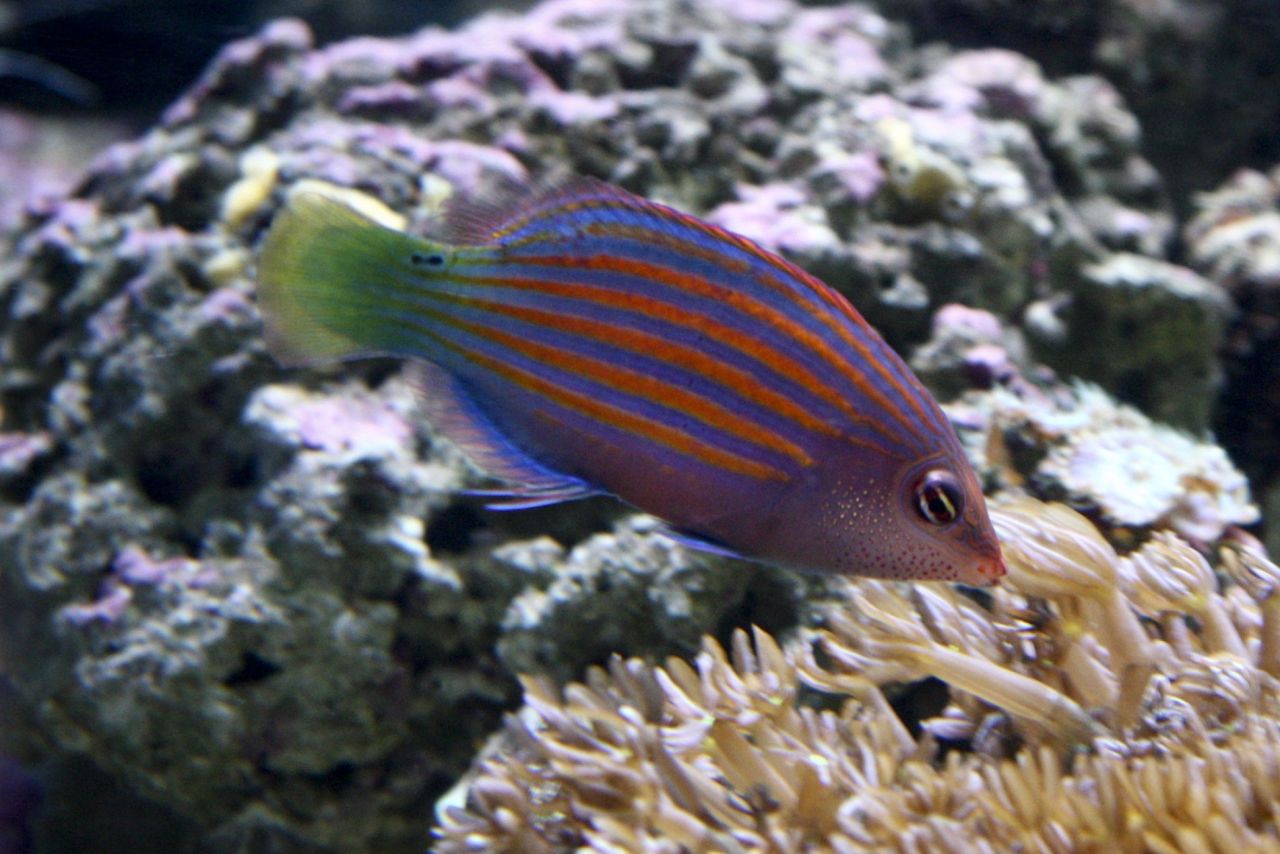Appearance and lifestyle:
Sixline wrasses (Pseudocheilinus hexataenia) are small, colourful fish, that are characterized by their bright blue and orange lines. These small fish are aggressive and will protect their feeding territory from intruders. Despite this aggression, they are shy and will lurch amongst coral for protection from larger predators.
Habitat:
They inhabit coral reefs of the Indo-Pacific, ranging from KwaZulu-Natal and the Red Sea to the Ryukyu islands of Japan.
Diet:
Sixline wrasses are voracious feeders, preying on small bottom-dwelling crustaceans and occasionally serving as cleaner fish when no bottom-dwelling prey is available.
Threats:
Threats faced by the sixline wrasses is habitat loss, climate change etc.
What is a wrasse?
Wrasses are a large and diverse group of fish, collectively forming the family Labridae. They are exclusively marine fish with a wide variety of colours, shapes and sizes. 70 species inhabit the waters of southern Africa, although there are over 600 species of wrasse globally. Wrasses occupy all five oceans, but their greatest diversity is in shallow tropical and subtropical waters, particularly associated with reefs. Most wrasse species are small, growing to less than 20cm, although some giant species can reach 2.5m.
Most wrasse species begin life as female and alter to male with age, often co-occurring with a colour change. As with many protogynous species, harems are common, where a large male is associated with a large group of females. In situations where a group has multiple males, some are able to reverse their sex change. Almost all wrasse species are predators, using strong pharyngeal jaws to crush shellfish and crustaceans.
Wrasses are famous among biologists for their complex jaw structures. Unlike humans and most fish, who have two articulating bones in our jaws, wrasses have four. This allows them to shift their jaw into a great many positions, enabling them to most effectively carry out a variety of movements, such as thrusting their jaw forward to catch a prey or applying force to crush a shell. Usually each of these actions would require a specific evolutionary jaw adaptation.
